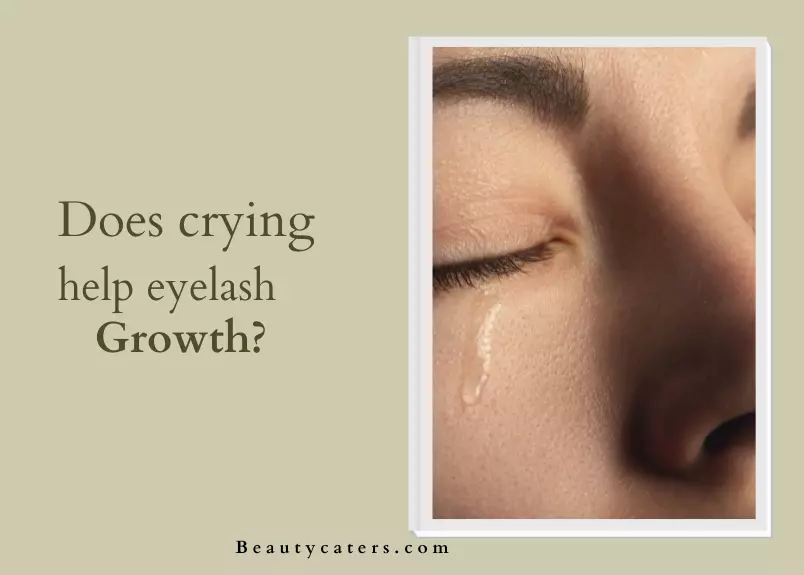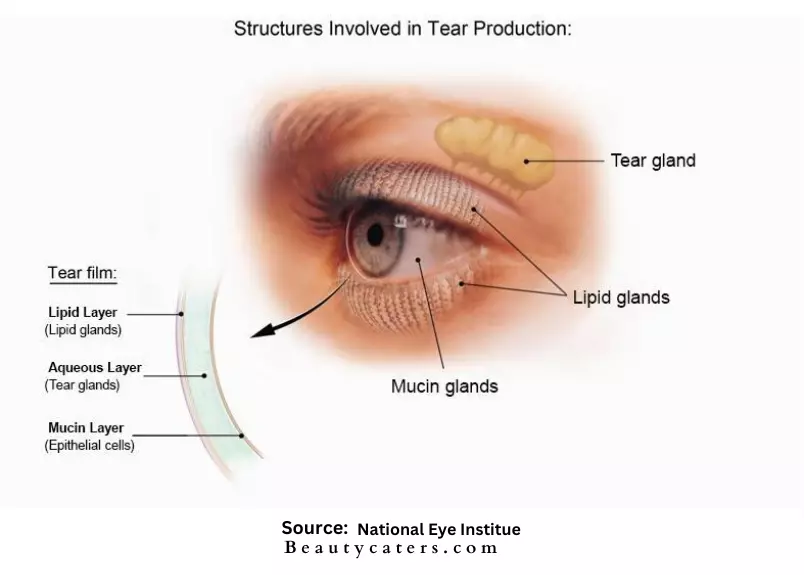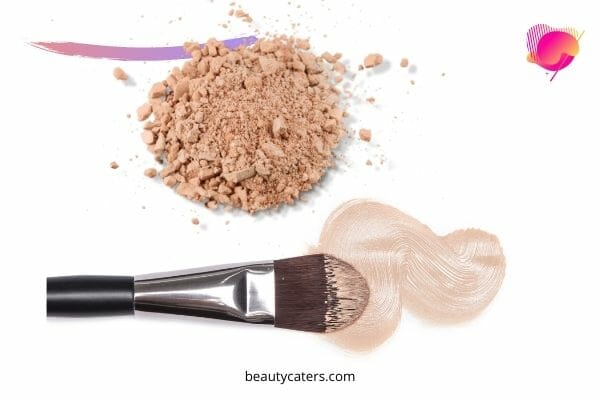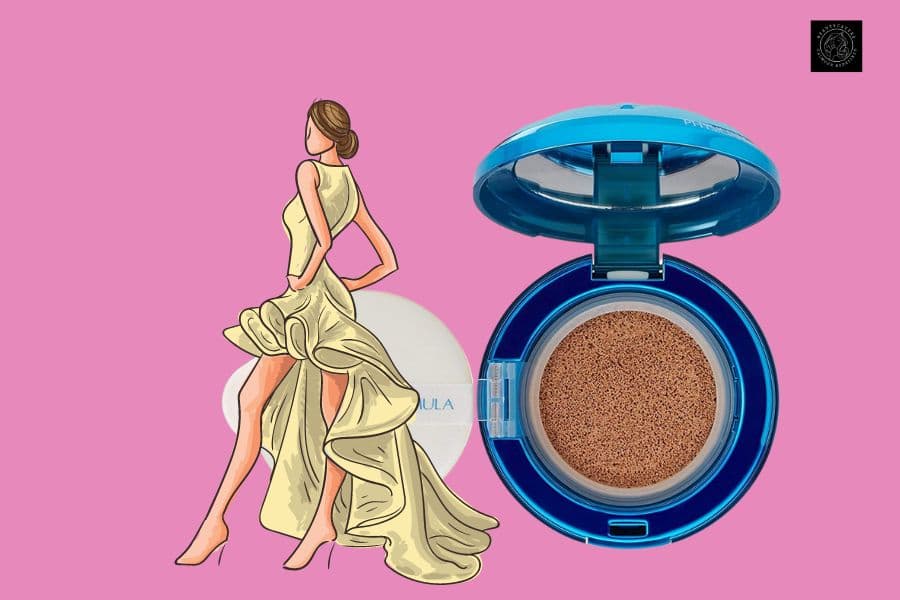Does crying make your eyelashes longer? Fact checked
At BeautyCaters, our expert team independently curates every recommended product. Purchases through our links may earn us a commission. Explore our transparent selection process.
No, crying does not make your eyelashes longer.
Crying is often seen as a sign of sadness and despair. But did you know that shedding those tears may actually have some benefits for your lashes? Many people wonder – does crying make your eyelashes longer?
It’s a reasonable question – after all, crying involves lubricating the eyes with extra fluid. Could this moisture boost lash growth? Let’s dive into the science behind tears to find out.
The Science Behind: Does Crying Make Your Eyelashes Longer?
1. Tears and its effects
Tears, often associated with emotions, have a complex structure designed to keep our eyes healthy and functioning optimally.
Comprising three distinct layers—the outer oily layer, middle watery layer, and inner mucous layer—tears play a vital role in maintaining the overall health of our eyes.
The outermost oily layer, produced by the meibomian glands, prevents rapid tear evaporation, ensuring that the eyes remain adequately lubricated.
The watery layer, the largest portion of tears, contains electrolytes, enzymes, and proteins that nourish the cornea and maintain clear vision.
Finally, the inner mucous layer, generated by goblet cells, facilitates the even distribution of tears across the eye’s surface, contributing to a stable tear film.
2. Addressing the myth of eyelash growth by tears
The intriguing question of whether crying can lead to longer eyelashes has circulated for quite some time.
However, scientific evidence is lacking to substantiate this claim.
While tears do contain nutrients and proteins essential for overall eye health, the concentrations of these components are unlikely to have a significant impact on eyelash growth.
The factors influencing eyelash length are primarily rooted in genetics and hormonal fluctuations. Though some eyelash serums formulated with ingredients like prostaglandins can stimulate follicle growth, achieving noticeable results requires consistent, long-term application.
It’s important to recognize that the magic of longer eyelashes lies not in tears, but in understanding the genetic and hormonal factors at play.
3. Prioritizing overall eye health for healthy eyelashes
If the allure of longer eyelashes beckons, it’s crucial to focus on strategies that promote overall eye health.
While shedding tears is a natural and beneficial process, the key to vibrant and healthy eyes involves maintaining proper hygiene, receiving regular eye care, and adopting a balanced diet rich in nutrients that support eye function.
By understanding the science behind tears and debunking the myth of crying as an eyelash growth remedy, we can make informed decisions about lash-enhancing options. It will help us embrace practices that ensure our eyes remain as beautiful and healthy as ever.
The complex composition of tears
To understand how crying affects lashes, we first need to know what’s in our tears. Tears are highly complex, containing over 100 different compounds.
The key components include:
- Water: Comprises most of the tear volume
- Oils: Provide lubrication and prevent evaporation
- Mucins: Gel-like proteins that coat the eye
- Antibodies: Protect against infection
- Hormones: Involved in emotional tears
- Electrolytes: Minerals like sodium, potassium, and calcium
This rich composition allows tears to nourish the ocular surface. The oils lubricate and seal moisture in. Mucins spread fluid evenly. Electrolytes keep eyes hydrated. Antibodies and anti-inflammatory agents shield against pathogens and debris.
When we cry, our lacrimal glands produce tears more rapidly and in greater amounts. This baths the eyes and lashes in protective substances.

Ingredients of tears:
Did you know tears have layers? Here are the layers of tears:
- Oily Layer: The outermost layer of tears, produced by the meibomian glands, is rich in lipids or oils. These lipids help prevent the evaporation of tears, ensuring that the eyes remain adequately moisturized.
- Watery Layer: The middle layer makes up the majority of tears and contains water along with electrolytes, enzymes, and proteins. This layer helps nourish the cornea, and the clear front surface of the eye and maintains a smooth optical surface for clear vision.
- Mucous Layer: The innermost layer, produced by goblet cells, contains mucins. These proteins help spread the tears evenly over the eye and aid in maintaining a stable tear film.
Is there any benefit of tears on eyelashes?
Tears serve many crucial functions for our eyes. Basal tears are continuously secreted to keep our eyes lubricated. They contain water, oils, and mucus that coats the eye. Reflex tears flush out irritants or foreign particles that get in your eye. Emotional tears are produced in response to strong feelings or stress.
All types of tears contain a complex mixture of substances like water, oils, proteins, antibodies, and hormones. Their chemical makeup allows them to nourish the eye’s surface and keep it moist. Tears also remove debris and bacteria, protecting the eyes from infection.
This constant lubrication is important for maintaining healthy eyelashes. The oils in tears condition lashes while antimicrobial components reduce bacteria around the lash line. Overall, tears help keep lashes supple and clean.
Now let’s explore how key tear components may impact lash length when you cry.
Related: Why do eyelashes fall out and how to prevent it?
4 ways tears may influence eyelash growth
While no studies confirm crying lengthens lashes, the act of producing tears may support growth:
1. Tears contain Sodium and Potassium to hydrate lashes
You’ve probably tasted the saltiness of tears before. This comes from their sodium content. Along with potassium, sodium helps regulate the body’s electrolyte and fluid balance.
Crying releases higher volumes of tears enriched with these minerals. This provides additional hydration and nutrients to lash follicles. The electrolytes may also help exfoliate dead skin cells around the lashes.
Well-hydrated, nourished follicles are primed for healthy hair growth. So in theory, the sodium and potassium in tears may promote longer lashes.
2. Tears contain Calcium to support lash growth
Calcium is also an essential electrolyte in tears. Our bodies need calcium for proper muscle, nerve, and hormone function. Tears delivered calcium directly around the eyes.
This mineral intake may support lash growth by assisting the thyroid gland. The thyroid regulates metabolism and hormone activity. Any thyroid dysfunction can disrupt normal lash cycling.
The extra calcium from crying may help maintain thyroid balance and the ideal metabolism for eyelash follicles to produce their longest hairs.
3. Tears contain Oils that condition lashes
Another key component of tears is the fatty oils and lipocalin proteins. These oils keep lashes conditioned to prevent brittleness and breakage.
The more tears shed during crying, the more conditioning oils coat the lashes. This added lubrication allows lashes to reach their maximum length before naturally shedding from the follicle.
Well-oiled lashes stay supple and flexible. They’re less prone to snapping off before their growth cycle completes.
4. Tears may enhance circulation to lash roots
Crying causes repeated muscle contractions around the eyes. The wide opening and closing of eyelids during sobbing may also stimulate blood circulation to the lash line.
Increased blood flow delivers more nutrients and oxygen to the hair follicle. This energizes the root for potentially faster and longer hair production.
While not proven, the boosted circulation from crying may nourish lash follicles and encourage growth.

Can crying harm lashes?
Excessive crying likely doesn’t damage lashes directly. However, rubbing your eyes vigorously while crying can cause lash loss. This friction can loosen lashes before they are ready to shed naturally.
Crying for extended periods can also leave eyes bloodshot. The burst blood vessels may create a temporary reduction in oxygen and nutrients for lash follicles. But again, no strong evidence proves crying stunts growth.
Those with chronic dry eye problems may experience brittle, thinning lashes as tears don’t adequately hydrate the area. In such cases, crying may provide a burst of moisture that temporarily improves lash health.
Chronically dry eyes also need tears to maintain lash health. Those with conditions like blepharitis or Sjogren’s syndrome may find crying provides a surge of hydration to improve brittle lashes.
As long as you avoid aggressive rubbing, crying moderately poses minimal risks. The eye stimulation may even benefit lash length, but more studies are needed.
What’s proven to grow long, healthy eyelashes?
While crying’s effects are uncertain, we know these factors impact lash length and fullness:
- Genetics: DNA determines your max lash length and growth cycle.
- Age: Hormonal shifts with age lead to finer, shorter lashes.
- Nutrition: Diets with vitamins A, C, E, and B, plus iron, zinc, biotin, and magnesium promote lash health.
- Hydration: Drinking enough water is crucial for growing lashes.
- Oils & conditioners: Natural oils like coconut and castor oil boost lashes. So do peptide serums.
- Health conditions: Diseases like hypothyroidism, hypertension, and autoimmune disorders can trigger excess lash shedding.
- Medications: Drugs like chemotherapy cause lashes to thin and fall out prematurely.
By caring for your overall health, you can support your natural lash length. Using lash conditioners with botanical oils, peptides, and biotin will also nourish lashes.
Takeaway: Occasional crying won’t harm lashes
Can crying make your eyelashes longer? There’s no guarantee that sobbing will lead to extra length. However, the anatomy of crying indicates potential benefits for lashes.
The main advantage is keeping the eyes lubricated with oils and hydrating fluids. This reduces lash breakage versus leaving eyes dry. Just don’t rub your eyes vigorously while crying.
Science shows tears nourish eyes and crying may provide added stimulation to lash follicles. However, more research is needed to know if crying actively makes lashes longer.
Nonetheless, occasional sobbing is unlikely to damage lashes as long as you don’t rub your eyes. The extra fluids may even benefit lash health, keeping them supple.
Sources:
- American Academy of Ophthalmology. (2020). “What Are Tears and What Are They Made Of“
- National Eye Institute. (2021). “How tears work“
- Healthline. (2021). “What is tear made of“










